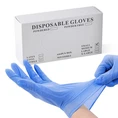When choosing a sterilization bag, consider the following key factors:
1. Material: Ensure the bags are made from medical-grade materials such as polyethylene (PE) or polypropylene (PP),
which can withstand high temperatures and chemical corrosion from various sterilization methods like steam, ethylene
oxide, or plasma.
2. Sterilization Indicator: Opt for bags with built-in or external sterilization indicators. These change color once they've
been exposed to the appropriate temperature or gas concentration, confirming effective sterilization.
3. Sealability: A strong seal is crucial to prevent microbe infiltration and maintain sterility. Look for bags with self-sealing
strips or heat-seal capabilities that ensure a secure closure before and after sterilization.
4. Size & Transparency: Choose bags that appropriately fit the items being sterilized to avoid waste or ineffective sterilization
due to incorrect sizing. Transparency aids in quick identification of contents.
5. Permeability: For gas sterilization processes (like ethylene oxide), bags need to be permeable enough to allow the sterilant
gas to penetrate all areas within.
6. Certifications & Standards: Verify that the bags meet international or regional medical device standards such as ISO 11607-1
and ISO 11137, as well as any industry-specific requirements or regulations.
7. Batch Number & Traceability: Select bags that have clear batch numbers and manufacturing dates for quality control purposes
and easy traceability in case of recall or audit needs.
By taking these factors into account alongside your specific sterilization
needs and the nature of the items to be sterilized, you can effectively select the right sterilization bags. If unsure, consulting with
sterilization product suppliers or infection control specialists in your institution can provide further guidance.





